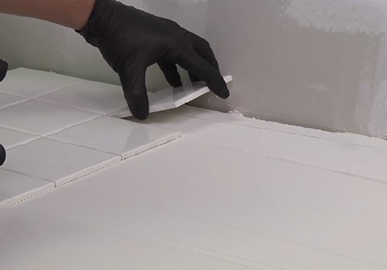Hydroxypropyl methyl cellulose (HPMC) is a versatile, water-soluble polymer derived from cellulose, used across various industries due to its unique chemical properties. Here’s how HPMC works in different applications:
1. Water Retention
- Mechanism: HPMC forms a gel-like structure when dissolved in water, creating a matrix that holds water molecules within it.
- Function: This ability helps HPMC retain moisture in formulations such as cement, mortars, adhesives, and cosmetics, ensuring longer working times and better performance.
2. Thickening Agent
- Mechanism: HPMC increases the viscosity of aqueous solutions by forming hydrogen bonds between the water and the polymer chains. This leads to a thickening effect.
- Function: It is used in products like paints, coatings, detergents, and cosmetics to achieve desired consistency and texture. In pharmaceuticals, it thickens suspensions and syrups.
3. Film-Forming
- Mechanism: HPMC forms a protective film when it dries, which acts as a barrier to moisture, gases, or other substances.
- Function: This property is crucial in coatings for tablets, where HPMC serves as a protective coating to control drug release, and in cosmetics or food products as a moisture barrier.
4. Controlled Release in Pharmaceuticals
- Mechanism: HPMC swells upon contact with fluids, forming a gel layer that controls the diffusion of active ingredients.
- Function: It regulates the release of drugs in controlled-release formulations, allowing for extended delivery of medication over time.
5. Stabilizer and Emulsifier
- Mechanism: HPMC stabilizes emulsions and suspensions by preventing the separation of ingredients. Its water-binding properties maintain the homogeneity of the mixture.
- Function: In products like lotions, creams, or food items, HPMC prevents ingredients from separating, ensuring a stable product over time.
6. Binding Agent
- Mechanism: HPMC’s adhesive properties allow it to bind particles together.
- Function: It is used in tile adhesives, mortars, and tablets to improve cohesion and adhesion between particles, leading to stronger and more durable formulations.
7. Lubricant
- Mechanism: HPMC can reduce friction in various processes due to its smooth, gel-like consistency.
- Function: In pharmaceuticals, it is used as a lubricant in tablet manufacturing, while in cosmetics, it provides smoothness and glide during application.
8. Temperature-Sensitive Gelation
- Mechanism: HPMC exhibits thermally reversible gelation. It forms a gel upon heating and becomes a liquid when cooled.
- Function: This property is useful in applications like eye drops or contact lens solutions, where the viscosity of the product increases at body temperature, providing better adhesion and moisture retention.


